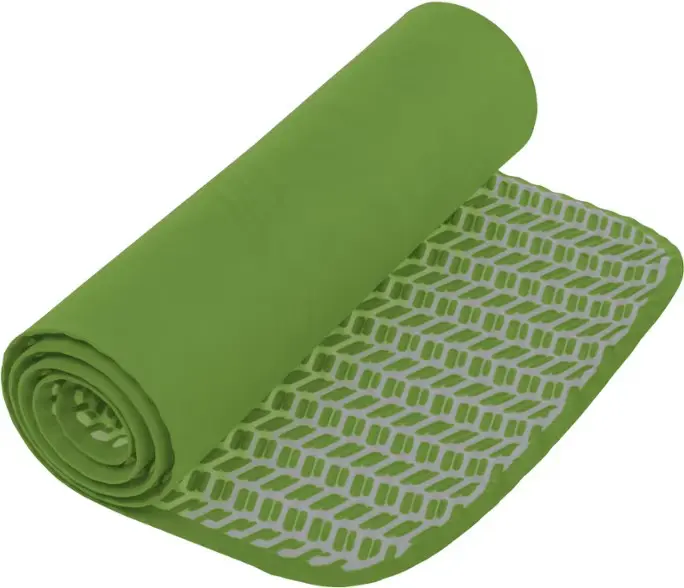We’re reader-supported. When you buy through links on our site, we may earn an affiliate commission. Disclosure
What are the Best Budget Sleeping Pads in 2023?
We understand the importance of having a great night of sleep while out hiking on the trail. A comfortable sleeping pad can make all the difference, but finding one that doesn’t weigh down your pack or break your budget is important. That’s why we’ve reviewed 6 budget sleeping pads under $100 that you might consider for your next backpacking trip.
The sleeping pads we cover in this guide are developed by reputable brands with a history of making great gear. They’re durable and lightweight and cover a wide range of R-values so you’re sure to find a pad that will work perfectly for you.
The R-value of a sleeping pad determines its ability to resist the flow of heat through it. A higher R-value means better insulation from cold surfaces. Sleeping pads have R-values that range from less than 2 for lightweight sleeping pads to 4 or higher for thicker pads. See the chart below for reference on what R-value pad will be appropriate for your backpacking conditions.
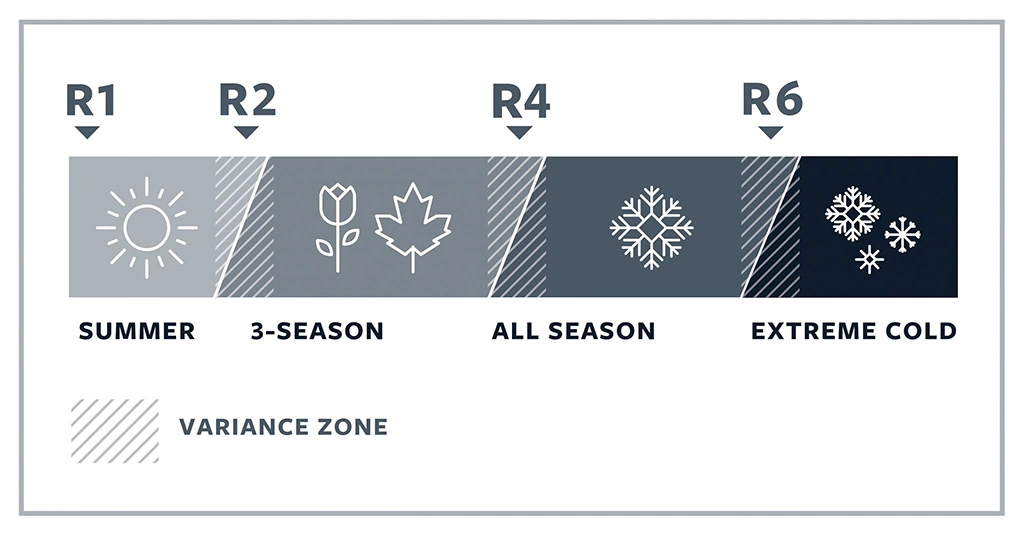
Best Overall Budget Sleeping Pad
NEMO Switchback Sleeping Pad
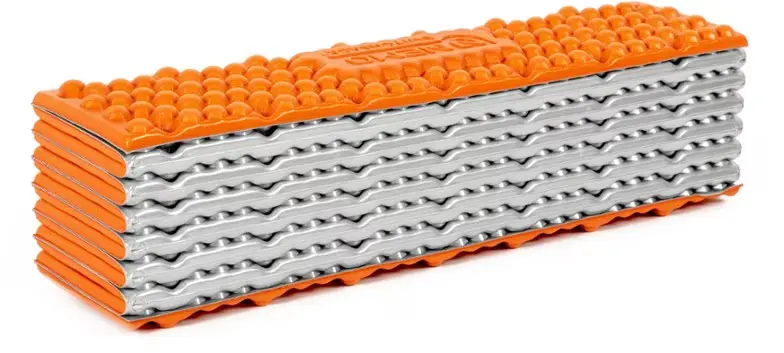
Price: $54.95(Regular); $44.95(Short)
Weight: 14.5oz(Reg.); 10.5 oz(Short)
R-value: 2.0
Dimensions: 72 x 20 x 0.9 in (Reg.); 51 x 20 x 0.9 in (Short)
What we love: The NEMO Switchback has been the sleeping pad of choice for thousands of experienced backpackers for many, many years. This super durable, lightweight sleeping pad performs as well as pads that run up into the hundreds of dollars range. NEMO makes use of metalized thermal reflective film which reflects heat back towards your body allowing this pad to perform in tougher conditions than its R-value may suggest.
Additional well-thought-out features include the use of tall foam nodes for a comfortable sleep and an innovative folding design that packs down small. Even with these features the product is long-lasting and can be used repeatedly for many years. At a price point of under $55, you won’t go wrong picking up the NEMO Switchback as a budget sleeping pad.
Best Cold Weather Budget Sleeping Pad
Sea to Summit Camp Self-Inflating Sleeping Pad
What we love: The Sea to Summit Camp Self-Inflating Sleeping Pad is an incredible value if you are looking for a pad that’s a bit thicker or that can perform in colder conditions. The self-inflating system is very easy to operate on both inflation and deflation, and this pad packs down to a small size of 6.5 x 10 inches. With an R-value of 4.2 and a thickness of 1.5 in, this pad is built to perform in tough, cold conditions. Sea to Summit also includes their pillow lock system on this pad which can be paired with their pillow.
More Great Budget Sleeping Pads
Exped FlexMat Sleeping Pad

Price: $39.95
Weight: 12.3oz(Medium); 1lb 0.8oz(Long Wide)
R-value: 1.5
Dimensions: 72 x 20.5 x 0.7 in (Medium); 77.6 x 25.6 x 0.7 in (Long Wide)
What we love: The Exped FlexMat Sleeping pad is another excellent closed-cell pad. This ultralight sleeping pad won’t weigh down your pack or your wallet, coming in at under $40. The foam is durable and comfortable, and you have the ability to fold up the first few portions of the mat to use it as a built-in pillow. For this reason, you might want to consider going with the Long Wide version of the Exped FlexMat.
Therm-a-Rest Z Lite Sol Sleeping Pad
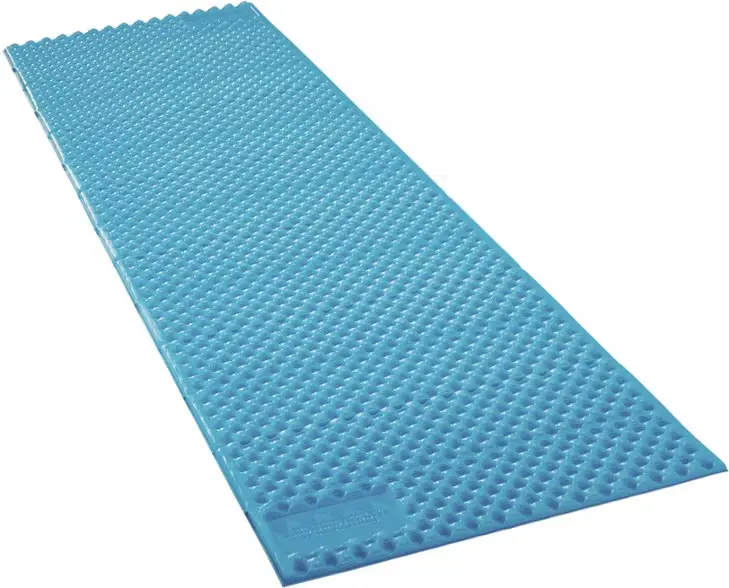
Price: $57.95(Regular); $47.95(Small)
Weight: 14oz(Reg.); 10oz(Small)
R-value: 2.0
Dimensions: 72 x 20 x 0.75 in (Reg.); 51 x 20 x 0.75 in (Small)
What we love: Another tried and true sleeping pad, the Therm-a-Rest Z Lite Sol Sleeping Pad is an excellent budget option for hikers seeking to lighten their pack load. This pad uses the ThermaCapture surface to reflect radiant heat back to your body, increasing the warmth of the heat-trapping dimples by 15%.
Therm-a-Rest Trail Scout Sleeping Pad

Price: $74.95(Regular); $64.95(Short); $94.95 (Long)
Weight: 1lb 8oz(Reg.); 15oz(Short); 2lb 1oz(Long)
R-value: 3.1
Dimensions: 72 x 20 x 1 in (Reg.); 47 x 20 x 1 in (Short); 77 x 25 x 1 in (Long)
What we love: Another great open cell option with a higher R-value, the Therm-a-Rest Trail Scout Sleeping pad is dependable and will leave you feeling rested. This 1-inch thick pad packs down tight, and we think it’s a great option if you’re looking for a mid-range sleeping pad on a budget.
Big Agnes TwisterCane BioFoam Sleeping Pad
What we love: The Big Agnes TwisterCane BioFoam Sleeping Pad is an excellent lightweight sleeping pad. This product features a closed-cell foam technology that creates a sturdy and comfortable layer between your body and the ground. One side of the foam is smooth while the other side boasts a tire tread pattern. The material used is environmentally friendly and contains more than 60% sugarcane resin that is sustainably grown. It is made of unique EVA foam.
How We Evaluate Sleeping Pads
When reviewing budget sleeping pads, we look to find the best value pads available on the market while not compromising on quality. By being in touch with manufacturers and industry movements for outdoor gear, we can guarantee that these recommendations are the best options available when looking for a sleeping pad that won’t break the bank. The durability and performance of these pads will not let you down on the trail.
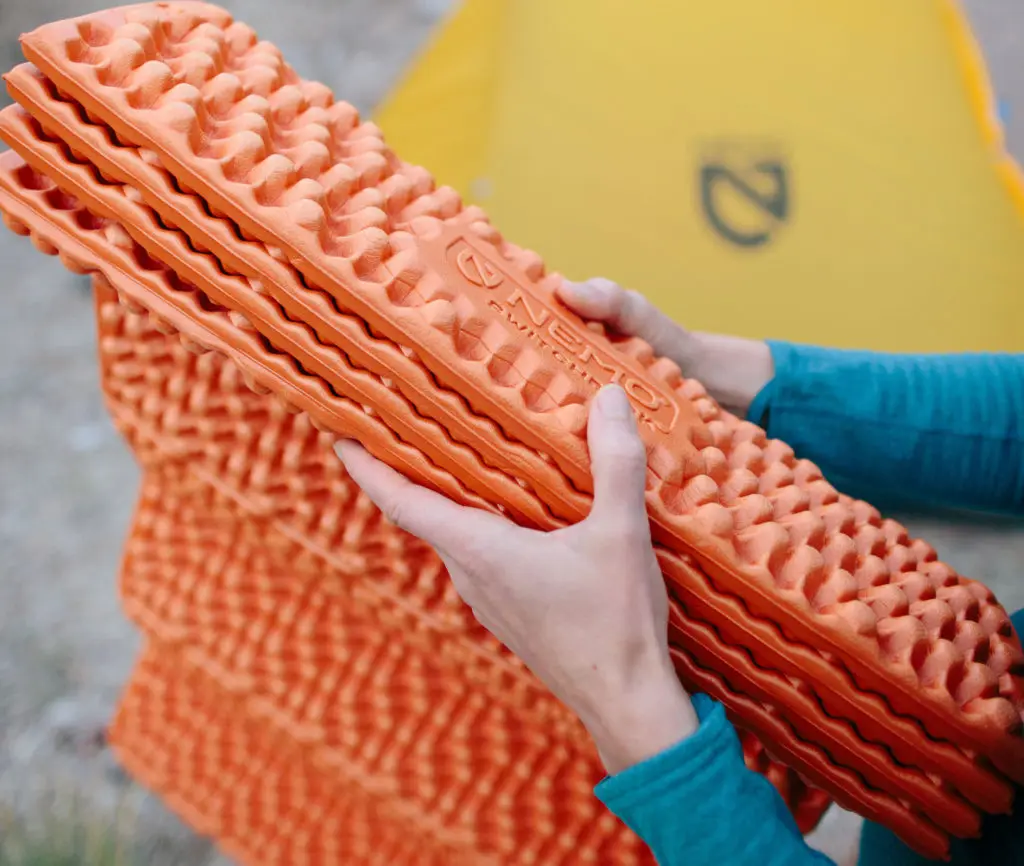
Budget Sleeping Pad Buyer Tips
Budget sleeping pads are an essential piece of gear for any overnight camping trip. They provide cushioning and insulation between the ground and the camper, ensuring a comfortable night’s sleep. However, with so many options on the market, it can be challenging to find a quality sleeping pad that won’t break the bank.
One option for budget-conscious campers is to consider closed-cell foam sleeping pads. These pads are lightweight and durable, making them an excellent choice for backpackers who need to keep their gear weight down. They are also affordable, with many options available for under $50. While they may not be as comfortable as some of the more expensive inflatable options, they are a reliable and cost-effective choice for those on a tight budget.
Another option to consider is inflatable sleeping pads. While they can be more expensive than closed-cell foam pads, there are still affordable options available. Look for pads that are made with durable materials and have a high R-value (a measure of insulation). Many budget inflatable pads also come with features such as built-in pillows and easy inflation systems, making them a comfortable and convenient choice for campers on a budget.
Understanding the Importance of a Budget Sleeping Pad
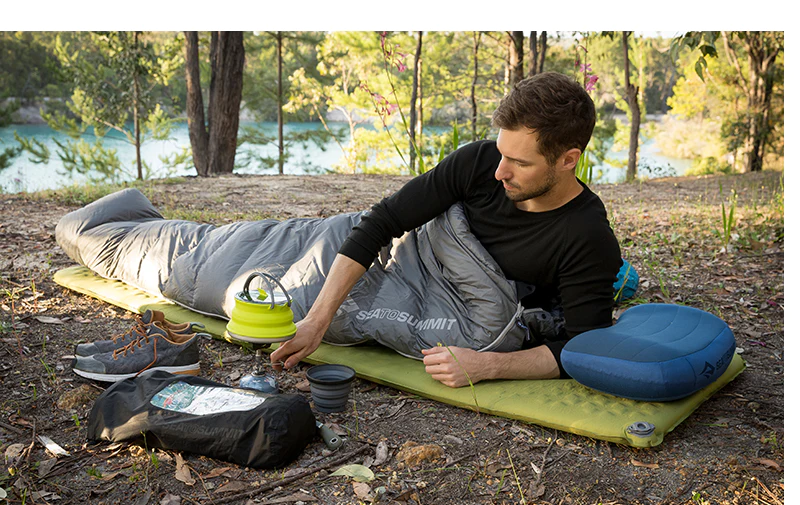
A budget sleeping pad is an essential gear for any backpacker or camper who wants to get a good night’s sleep. It provides insulation from the cold ground and offers a comfortable surface to sleep on. However, not all sleeping pads are created equal, and choosing the right one can be overwhelming. Here’s why a budget sleeping pad is an important investment for any outdoor enthusiast.
Comfort
A budget sleeping pad may not have all the bells and whistles of a high-end sleeping pad, but it will still provide a comfortable surface to sleep on. It will have enough cushioning to prevent you from feeling every rock and root under your tent. It will also be lightweight and easy to pack, making it an ideal choice for backpackers who need to save space and weight.
Insulation
Sleeping on the ground can be uncomfortable and cold, especially during the colder months. A sleeping pad will provide insulation from the cold ground, keeping you warm and comfortable throughout the night. It will also prevent heat loss, ensuring that you stay warm even in sub-zero temperatures when out on the trail.
Durability
A budget sleeping pad may not last as long as a high-end sleeping pad, but it will still be durable enough to withstand regular use. It will be made of high-quality materials that can withstand wear and tear, ensuring that it lasts for several camping trips.
Affordability
A budget sleeping pad is an affordable investment for any backpacker. It will provide all the essential features of a high-end sleeping pad at a fraction of the cost. This makes it an ideal choice for beginners who are just starting out with camping or backpacking.
A budget sleeping pad is an essential gear for any backpacker or camper who wants to get a good night’s sleep. It provides insulation from the cold ground and offers a comfortable surface to sleep on. With so many options available in the market, it’s important to choose the right one that meets your needs and budget.
Key Sleeping Pad Features to Consider

When shopping for a budget sleeping pad, there are several key features to consider. These features can make a big difference in the comfort and durability of the sleeping pad, as well as its weight and packability.
Size and Thickness
The size and thickness of the sleeping pad are important factors to consider. A thicker pad will generally be more comfortable, but it will also be heavier and bulkier to pack. A smaller pad may be lighter and more packable, but it may not provide enough cushioning for a good night’s sleep. It’s important to find a balance between size, thickness, and weight that works for your needs.
Material
The material of the sleeping pad can affect its durability, weight, and comfort. Many budget sleeping pads are made from lightweight materials like nylon or polyester, which can be less durable than heavier materials like PVC or TPU. However, lightweight materials can also make the sleeping pad easier to pack and carry. Look for a sleeping pad with a durable, puncture-resistant material that will stand up to regular use.
Type of Inflation
There are several types of inflation systems for sleeping pads, including self-inflating, manual, and electric. Self-inflating pads are the most common and convenient, as they can be inflated with just a few breaths. Manual pads require more effort to inflate, but they are generally lighter and more packable. Electric pads are the easiest to inflate, but they require access to a power source.
R-Value
The R-value of a sleeping pad measures its insulation value. A higher R-value means the pad will provide more insulation from the ground, making it warmer and more suitable for colder temperatures. However, a higher R-value also means a heavier and bulkier sleeping pad. Consider the climate and conditions you will be camping in when choosing a sleeping pad with the right R-value for your needs.
Price
Of course, price is an important consideration when shopping for a budget sleeping pad. While it’s possible to find high-quality sleeping pads at a lower price point, it’s important to balance cost with the features and quality you need for a comfortable night’s sleep. Look for a sleeping pad that offers a good balance of features and affordability.
Sleeping Pad Material and Durability
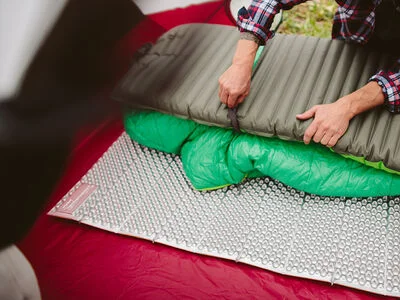
When it comes to sleeping pad material, there are several options available in the market. The most common materials used for sleeping pads are foam, air, and self-inflating pads. Foam pads are the most basic and affordable option. They are lightweight and durable, making them ideal for backpacking trips. Air pads are another popular option. They are lightweight and provide excellent insulation, making them ideal for cold-weather camping. Self-inflating pads are a combination of foam and air pads. They are easy to inflate and provide a comfortable sleeping surface.
Durability is an essential factor to consider when selecting a sleeping pad. The durability of a sleeping pad is determined by the material used and the thickness of the pad. Thicker pads tend to be more durable than thinner ones. The material used also plays a significant role in determining the durability of the sleeping pad. High-quality materials such as nylon and polyester are more durable than low-quality materials.
It is essential to consider the expected usage of the sleeping pad when selecting the material and thickness. If the sleeping pad is intended for frequent use, a more durable and thicker pad is recommended. Additionally, the environment in which the sleeping pad will be used should also be considered. For example, if the sleeping pad will be used in rocky terrain, a more durable pad is recommended to prevent punctures and tears.
In summary, the material and durability of a sleeping pad are crucial factors to consider when selecting a sleeping pad. Foam, air, and self-inflating pads are the most common materials used for sleeping pads. Thicker pads and high-quality materials such as nylon and polyester are more durable. The expected usage and environment should also be considered when selecting a sleeping pad.
Comfort and Insulation
When it comes to sleeping pads, comfort and insulation are two of the most important factors to consider. A good sleeping pad should provide a comfortable sleeping surface while also insulating the user from the ground.
There are a few different types of sleeping pads to choose from, each with its own level of comfort and insulation. Foam sleeping pads are a popular choice for those on a budget, as they are lightweight and provide adequate insulation. However, they may not be as comfortable as air or self-inflating sleeping pads.
Air sleeping pads are another popular option, as they provide excellent comfort and can be adjusted to the user’s desired firmness. However, they may not provide as much insulation as foam or self-inflating sleeping pads.
Self-inflating sleeping pads are a great choice for those who want a balance of comfort and insulation. These pads are typically thicker than foam sleeping pads and can be adjusted to the user’s desired firmness. They also provide excellent insulation, making them a great choice for cold-weather camping.
When choosing a sleeping pad, it’s important to consider the conditions you will be camping in. If you will be camping in cold weather, a self-inflating or foam sleeping pad may be the best choice. If you prioritize comfort over insulation, an air sleeping pad may be the way to go. Ultimately, the best sleeping pad for you will depend on your personal preferences and camping needs.

Budget Sleeping Pad Portability and Weight
When it comes to choosing a budget sleeping pad, portability and weight are important factors to consider. A lightweight sleeping pad can make a big difference when you’re carrying your gear on a backpacking trip, and a compact pad can save space in your pack.
Most budget sleeping pads are made with lightweight materials and are designed to be compact. However, some pads are more portable than others. In general, inflatable sleeping pads tend to be more portable than foam pads, as they can be deflated and rolled up to a smaller size.
When it comes to weight, foam sleeping pads tend to be lighter than inflatable pads. However, inflatable pads can be more comfortable and provide better insulation. It’s important to find a balance between weight and comfort when choosing a sleeping pad.
To help you choose a budget sleeping pad that is both portable and lightweight, consider the following:
- Look for sleeping pads made with lightweight materials, such as nylon or polyester.
- Choose a sleeping pad that can be easily compressed and rolled up to a small size.
- Consider the weight of the sleeping pad and how it will affect the overall weight of your backpack.
- Look for a sleeping pad that provides a good balance between weight and comfort.
Overall, a budget sleeping pad can be a great investment for anyone who enjoys camping or backpacking. By choosing a sleeping pad that is both portable and lightweight, you can ensure that you have a comfortable place to sleep while also keeping your backpack as light as possible.
Ease of Use for Sleeping Pads
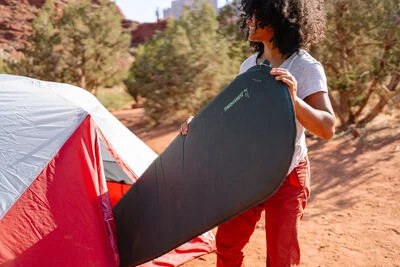
When it comes to sleeping pads, ease of use is an important factor to consider. Nobody wants to spend precious time and energy setting up their sleeping pad after a long day of hiking. Here are some key factors to keep in mind when evaluating the ease of use of sleeping pads:
Inflation and Deflation
One of the biggest factors that can affect the ease of use of a sleeping pad is how easy it is to inflate and deflate. Some sleeping pads require manual inflation with a pump or by blowing into a valve, while others are self-inflating. Self-inflating sleeping pads have a foam core that expands when the valve is opened, which can save time and effort. However, manual inflation can give you more control over the firmness of the pad.
Deflation can also be a factor to consider. Some sleeping pads can be quickly deflated with a valve, while others may require more time and effort to pack up.
Size and Weight
Another factor to consider when evaluating the ease of use of a sleeping pad is its size and weight. A smaller and lighter sleeping pad can be easier to pack and carry, but it may also be less comfortable. A larger and heavier sleeping pad may be more comfortable but can be more difficult to pack and carry.
Durability
Durability is also an important factor to consider when evaluating the ease of use of a sleeping pad. A sleeping pad that is prone to punctures or leaks can be frustrating to use and can require frequent repairs or replacements. Look for sleeping pads with durable materials and construction to ensure that they will last for many camping trips to come.
Overall, when evaluating the ease of use of a sleeping pad, it’s important to consider factors such as inflation and deflation, size and weight, and durability. By keeping these factors in mind, you can choose a sleeping pad that is easy to set up and use, so you can spend more time enjoying the great outdoors.
Maintaining Your Sleeping Pad

To ensure that your sleeping pad lasts for many camping trips to come, it is important to properly maintain it. Here are some tips to help keep your sleeping pad in top condition:
Cleaning Your Sleeping Pad
After each use, wipe down your sleeping pad with a damp cloth to remove any dirt or debris. For tougher stains, use a mild soap and water solution. Be sure to rinse thoroughly and allow the pad to air dry completely before storing it.
Storing Your Sleeping Pad
When not in use, store your sleeping pad in a cool, dry place. Avoid storing it in direct sunlight or near any heat sources, as this can cause the material to break down over time. It is also a good idea to store your sleeping pad unrolled and flat to prevent any creases or folds from forming.
Repairing Your Sleeping Pad
If your sleeping pad develops a leak or tear, it is important to repair it as soon as possible. Most sleeping pads come with a repair kit that includes a patch and adhesive. Follow the manufacturer’s instructions carefully to ensure proper repair.
Replacing Your Sleeping Pad
Even with proper care and maintenance, sleeping pads will eventually wear out and need to be replaced. Signs that it may be time to replace your sleeping pad include:
- Visible signs of wear and tear, such as cracks or holes
- Loss of air pressure during use
- Loss of insulation or cushioning
By following these simple tips, you can help extend the life of your sleeping pad and ensure that it provides a comfortable night’s sleep for years to come.
Choosing Your Budget Sleeping Pad
Choosing the right sleeping pad is crucial for a comfortable and enjoyable camping experience. The budget sleeping pads reviewed in this article all have their strengths and weaknesses, but they are all great options for those on a tight budget.
The NEMO Switchback Sleeping Pad offers excellent value for money with its lightweight design and comfortable sleeping surface. The Sea to Summit Camp Self-Inflating Sleeping Pad is also a great choice for those who want a lightweight and compact sleeping pad with a higher R-value that’s easy to pack and transport.
Overall, when choosing a budget sleeping pad, it is important to consider factors such as weight, size, comfort, and durability. By doing so, you can ensure that you choose a sleeping pad that meets your needs and allows you to get a good night’s sleep while camping.
If you’re seeking a great sleeping bag to pair with your pad, check out our guide on 15 Budget Sleeping Bags Under $150. We’re sure that between both guides you’ll be able to find the perfect sleeping setup for your backpacking adventures.


